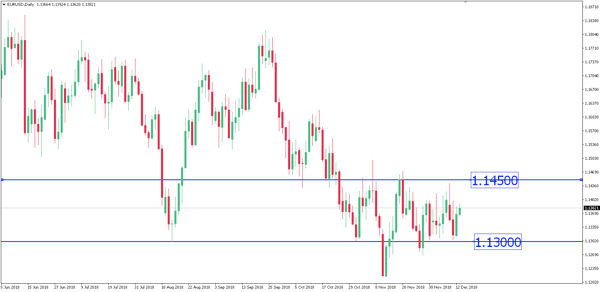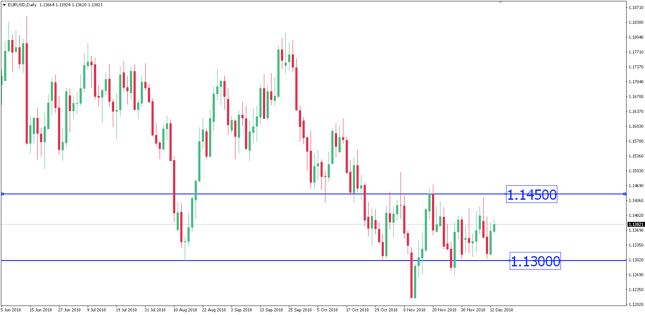If Draghi downgrades growth forecasts and lowers the inflation target for next year, EURUSD could dive lower.
ECB is widely expected to end its QE (quantitative easing) program tonight.
The QE program, which was one of the major crisis tools used by the ECB, has been anything but smooth, with the ECB spending almost US$3 trillion. While ending the net asset purchases and stressing interest rates and reinvestments moving forward, President Draghi ended up with an economy that may be slowing with a bleak inflation outlook.
Interest rates are also expected to remain unchanged, until the summer of 2019, as mentioned by the ECB previously. Given the faltering outlook of the eurozone, however, Draghi will be asked on whether the weaker economic outlook could result in rate hikes being pushed further away.
The ECB will also be announcing its new projections for both economic growth and inflation that will include 2021 for the first time. With the slump in growth, it is possible that the ECB could downgrade their growth for the next three years. During the September ECB meeting, the ECB projected growth in 2019 and 2020 to be 1.8% and 1.7% respectively.
Investors will also focus on the ECB’s plans on reinvesting the proceeds of its balance sheet, which it has planned to continue doing for “an extended period of time” beyond the end of its asset-buying program. The clarity of “extended period” is lacking but if the ECB states that it will continue to reinvest proceeds for less than two years, it could be seen as a hawkish move. We expect the ECB to be broadly accommodating and mention “as long as needed” given the currenct economic environment.
Inflation is currently at 1.7% for each of the next two years, which is well below the ECB’s goal of just under 2%.
Lastly, there has been talk of a new round of cheap loans for banks or TLTROs (Targeted Long-term Refinancing Operation(s)), with Italy often mentioned as a reason. Though the ECB’s chief economist said that it would be premature to decide now, 75% of respondents to a Bloomberg survey said that they expect an announcement of such an instrument being implemented early next year.
It is likely that Draghi will try to be as dull as possible while maintaining that the risks to the outlook will remain “broadly balanced,” rather than skewed to the downside. This is further justified by external hazards such as trade protectionism. Draghi could also lower the inflation target for 2019 given the current situation.
For the past two months, EUR/USD has been hovering between 1.1200 and 1.1500. We believe that as long as price is below 1.1450, this pair could continue to go lower.

Fullerton Markets Research Team
Your Committed Trading Partner















